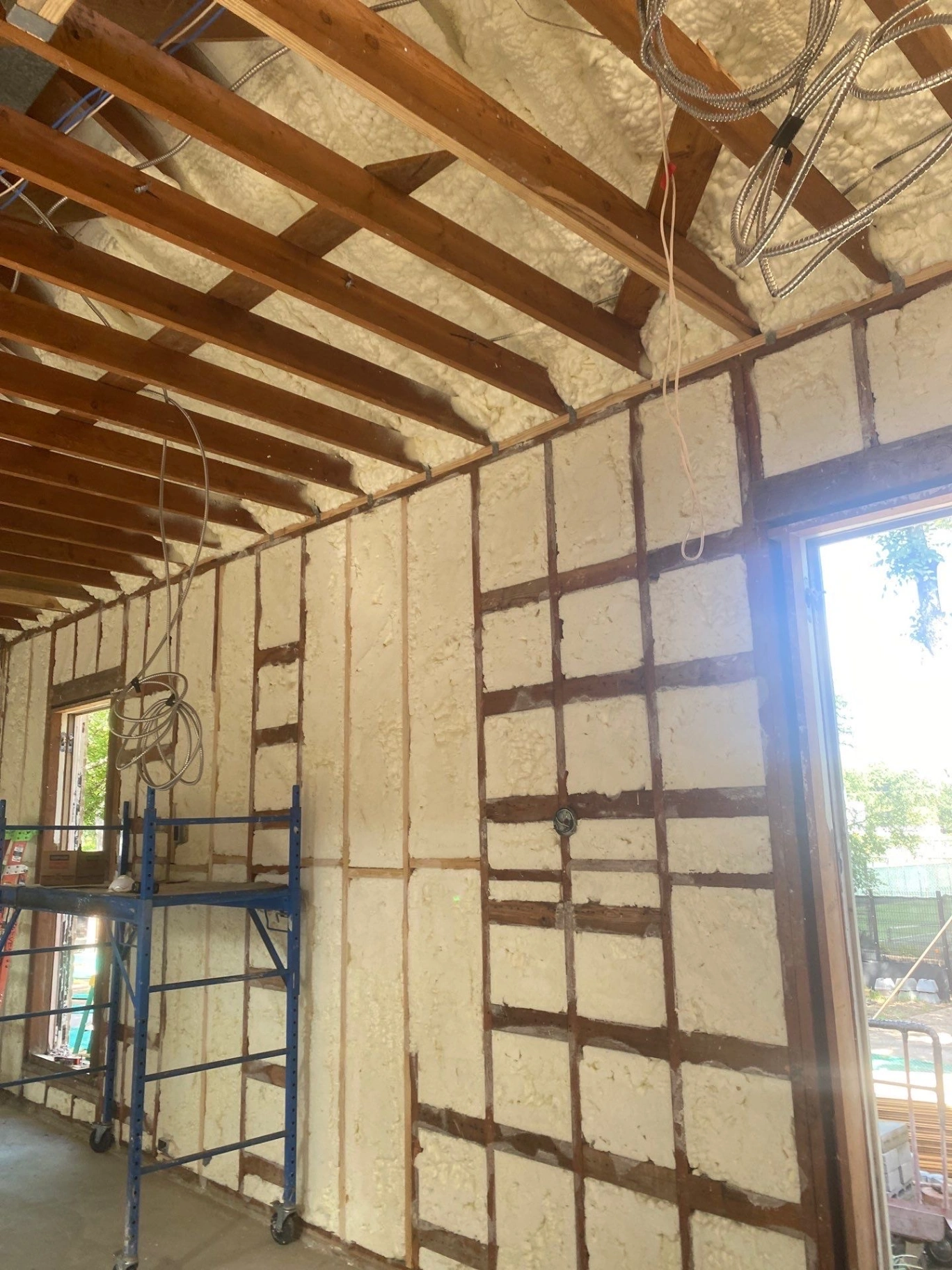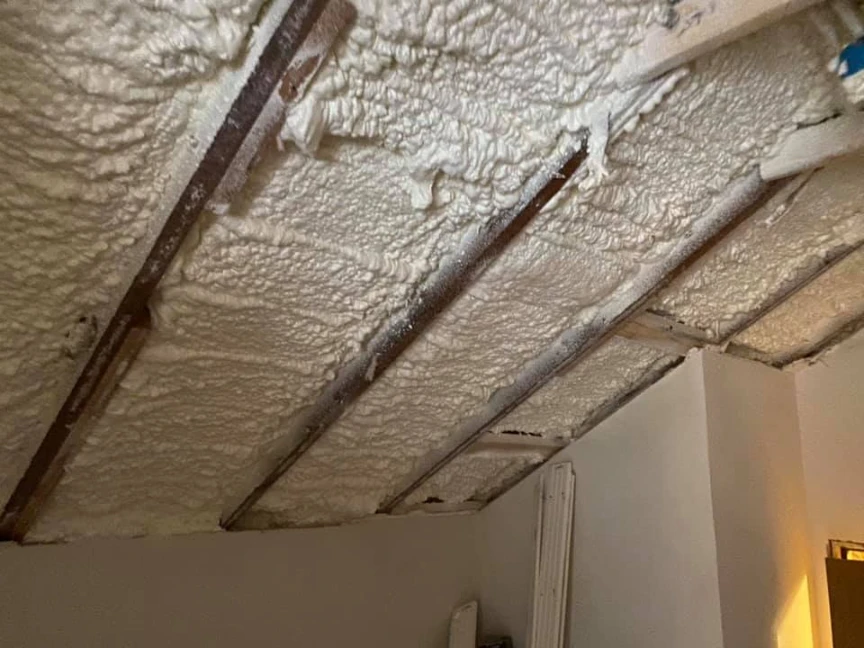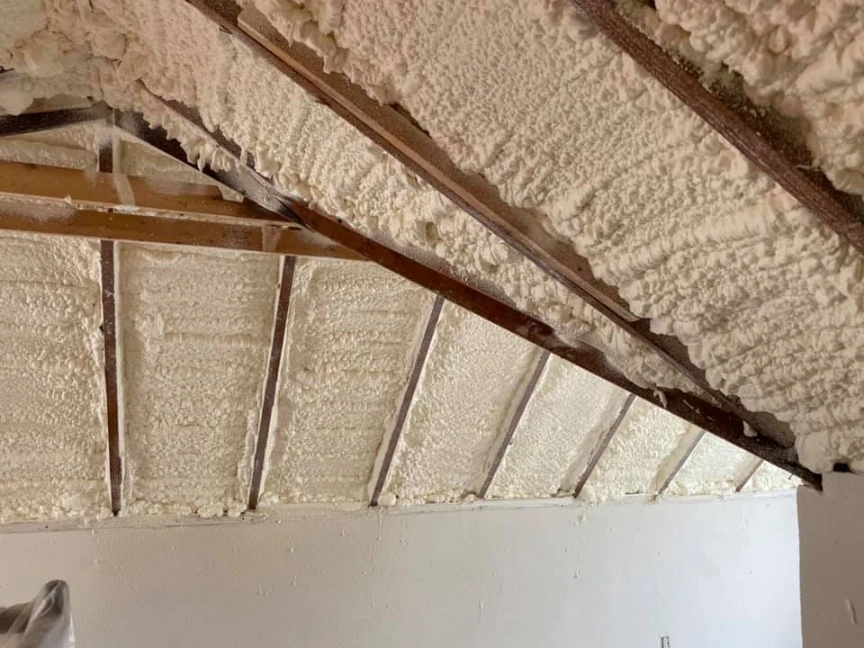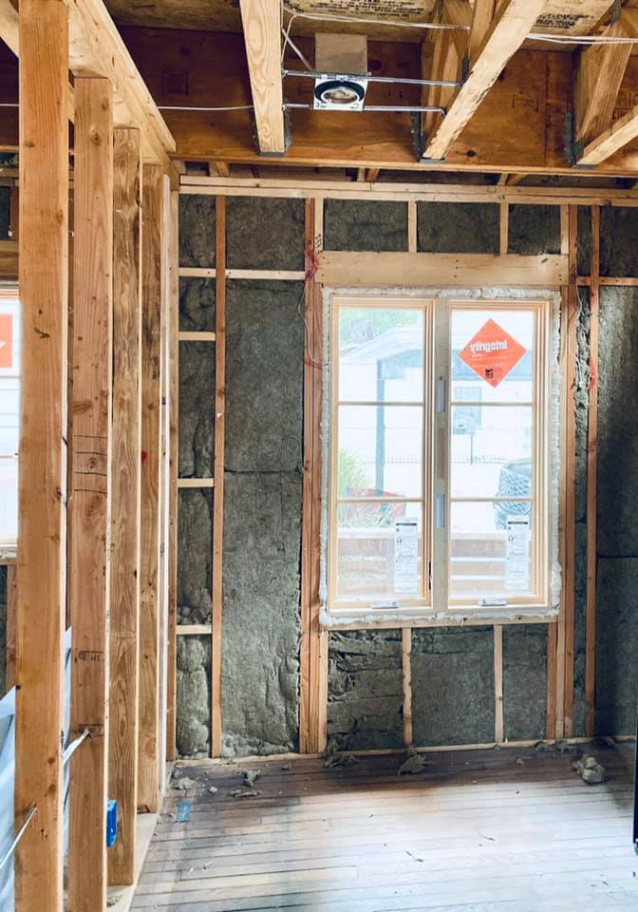Living in a home that feels drafty in the winter and excessively warm in the summer can be a constant source of discomfort and high energy bills. Many homeowners find themselves in a continuous battle with their thermostat, struggling to maintain a stable indoor temperature. This inefficiency is often due to outdated or inadequate insulation that allows conditioned air to escape and outside air to infiltrate. Residential spray foam insulation presents a modern solution to this age-old problem, creating a seamless barrier that fundamentally changes a home’s performance.
With years of hands-on experience in residential properties, the team at Stellrr Insulation & Spray Foam has seen firsthand how transformative this material can be. This comprehensive guide is a culmination of that experience, designed to provide you with a thorough understanding of spray foam insulation. You will learn about its foundational concepts, the different types available, and its various applications within your home. This guide will walk you through the benefits, the installation process, and important considerations, empowering you to make an informed decision for your home’s comfort and efficiency.
Understanding Spray Foam Insulation: The Basics
Spray foam insulation, or Spray Polyurethane Foam (SPF), is a chemical product created by mixing two liquid components, an isocyanate and a polyol resin. When these liquids are combined and sprayed, they react and expand on contact to create a foam that insulates, seals gaps, and can form an air and moisture barrier. Unlike traditional insulation materials like fiberglass or cellulose, which are pre-formed and fitted into cavities, spray foam is applied as a liquid and expands to fill every nook and cranny, creating a continuous, airtight seal.
This ability to create a custom-fit barrier is what sets spray foam apart. A significant portion of a home’s energy loss is due to air infiltration through gaps and cracks in the building envelope. Information from the U.S. Department of Energy shows that reducing these drafts can lead to significant energy savings. By sealing these leaks, spray foam insulation dramatically reduces energy waste, leading to substantial savings on heating and cooling costs.
How R-Value Applies to Spray Foam
The thermal resistance of insulation is measured by its R-value. A higher R-value indicates a greater ability to resist heat flow. Spray foam insulation generally offers a high R-value per inch compared to many traditional insulation materials. The specific R-value depends on the type of spray foam used.
- Open-cell spray foam typically has an R-value ranging from R-3.6 to R-3.9 per inch.
- Closed-cell spray foam is much denser and provides a higher R-value, generally between R-6.0 to R-7.5 per inch.
While R-value is an important metric, spray foam’s performance is also greatly enhanced by its air-sealing capabilities, which are not fully captured by the R-value measurement alone.
The Two Core Types of Spray Foam Insulation
Residential spray foam insulation is primarily available in two distinct types: open-cell and closed-cell. The difference lies in the structure of the tiny bubbles, or “cells,” that make up the foam.
Open-Cell Spray Foam
Open-cell spray foam has cells that are not completely encapsulated, which makes the foam softer, more flexible, and sponge-like in texture. This structure allows air to fill the spaces within the foam, which contributes to its insulating properties.
Characteristics of Open-Cell Foam:
- Lower Density: It has a lower density, typically around 0.5 pounds per cubic foot.
- High Expansion: It expands significantly upon application, often up to 3 inches in thickness, making it effective for filling irregular cavities and hard-to-reach areas.
- Vapor Permeability: Open-cell foam is permeable to water vapor, meaning it allows moisture to pass through. In some climates and applications, this may necessitate the use of a separate vapor barrier.
- Sound Dampening: Its soft texture makes it an excellent material for sound absorption, helping to create a quieter indoor environment.
Best Applications: Open-cell foam is often used for interior walls, ceilings, and attics where soundproofing is desirable and the risk of direct water contact is low.
Closed-Cell Spray Foam
In closed-cell spray foam, the cells are completely closed and tightly packed together. This creates a dense, rigid foam that is highly resistant to both air and water infiltration.
Characteristics of Closed-Cell Foam:
- Higher Density: It is much denser than open-cell foam, typically around 2 pounds per cubic foot.
- High R-Value: This density provides a superior R-value per inch, making it a powerful insulator.
- Vapor Barrier: Closed-cell spray foam acts as an effective vapor barrier, preventing moisture from passing through. At a thickness of about 1.5 to 2 inches, it can create a class II vapor barrier.
- Structural Strength: Its rigidity can add structural integrity to walls and roofs.
Best Applications: Closed-cell foam is ideal for exterior walls, crawl spaces, basements, and areas prone to moisture. Its high R-value makes it suitable for applications where space is limited but high thermal resistance is required.
| Feature | Open-Cell Spray Foam | Closed-Cell Spray Foam |
|---|---|---|
| R-Value per Inch | ~R-3.6 to R-3.9 | ~R-6.0 to R-7.5 |
| Density | Low (~0.5 lb/ft³) | High (~2.0 lb/ft³) |
| Structure | Soft, flexible, sponge-like | Rigid, dense |
| Moisture Permeability | Permeable (allows vapor to pass) | Impermeable (acts as a vapor barrier) |
| Sound Dampening | Excellent | Good |
| Structural Reinforcement | No | Yes |
| Cost | Lower | Higher |
Key Takeaways: Choosing the Right Foam
- Open-Cell Foam is a great choice for sound reduction in interior walls and is more budget-friendly. Its vapor permeability requires careful consideration of your climate and the specific application.
- Closed-Cell Foam offers superior insulation with a higher R-value per inch and acts as a moisture barrier, making it perfect for exterior applications, basements, and areas where moisture is a concern. It also adds structural strength.
The Major Benefits of Residential Spray Foam Insulation
Installing spray foam insulation offers a range of advantages that contribute to a more comfortable, energy-efficient, and healthier home.
1. Unmatched Energy Efficiency and Cost Savings
The primary benefit of spray foam insulation is its ability to create a highly effective air barrier. By expanding to fill gaps and cracks, it stops the air leakage that can account for a significant portion of a home’s energy loss. This airtight seal means your HVAC system doesn’t have to work as hard to maintain a consistent temperature, leading to substantial energy savings. A guide from the Spray Polyurethane Foam Alliance (SPFA) notes the significant impact of air sealing on energy use.
2. Improved Indoor Comfort
By preventing drafts and creating a continuous thermal envelope, spray foam insulation helps to eliminate hot and cold spots throughout your home. This results in more consistent and comfortable indoor temperatures year-round.
Expert Tip: Many homeowners are surprised by how much quieter their home becomes after installing spray foam. The material’s ability to dampen sound transmission from the outside and between rooms is a significant comfort-enhancing benefit.
3. Enhanced Indoor Air Quality
The airtight seal created by spray foam also helps to improve indoor air quality. By blocking the tiny cracks and crevices in your home’s structure it reduces the infiltration of outdoor allergens, pollutants, and dust. This can be particularly beneficial for individuals with allergies or respiratory conditions.
4. Moisture and Mold Control
Moisture intrusion can lead to serious problems, including mold growth, mildew, and wood rot. Closed-cell spray foam is impermeable to water and acts as a moisture barrier, preventing water from entering your home’s cavities. Because spray foam is made of an inert polymer, it does not provide a food source for mold or bacteria, further protecting your home. [Link to: How Insulation Prevents Mold Growth]
5. Long-Term Durability
Spray foam insulation is a durable, long-lasting solution. It is composed of an inert polymer that allows it to have an indefinite lifespan. Unlike traditional insulation materials that can sag, settle, or degrade over time, spray foam maintains its shape and effectiveness for the life of the building.
Common Applications for Spray Foam in Your Home
Spray foam insulation is versatile and can be applied in various areas of a home to maximize energy efficiency and comfort.
Attics and Roof Decks
Insulating the attic or the underside of the roof deck is one of the most effective ways to improve a home’s energy performance. Spray foam creates a continuous barrier that prevents conditioned air from escaping through the roof and stops hot attic air from radiating down into your living spaces during the summer.
Exterior Walls
Applying spray foam to exterior walls, either in new construction before drywall is installed or in existing homes during a renovation, creates a robust thermal and air barrier. This is particularly effective at stopping drafts and reducing energy loss.
Basements and Crawl Spaces
Basements and crawl spaces are common sources of moisture and air leaks. Applying closed-cell spray foam to the walls of these areas can prevent moisture intrusion, seal air leaks, and insulate the space, making the floors above warmer and more comfortable. [Link to: The Importance of Crawl Space Encapsulation]
Rim Joists
The rim joists, located at the perimeter of the floor framing, are a significant source of air leakage in many homes. Sealing and insulating this area with spray foam is a crucial step in creating an airtight building envelope.
The Professional Installation Process Explained
Proper installation is critical to the performance and safety of spray foam insulation. It is a job that should always be handled by trained and experienced professionals.
Expert Tip: DIY spray foam kits are available, but they are generally only suitable for very small projects. For insulating entire rooms or attics, professional equipment and expertise are necessary to ensure a proper chemical ratio and complete coverage.
Here is a general overview of the professional installation process:
- Consultation and Assessment: A professional contractor will first assess your home to determine the best type of foam and application areas for your specific needs and climate.
- Preparation: This is a crucial step. The installation crew will prepare the area by removing old insulation, covering windows, doors, and any other surfaces to protect them from overspray, and ensuring adequate ventilation.
- Safety Measures: Installers will wear comprehensive personal protective equipment (PPE), including respirators, eye protection, and full-body suits, to protect themselves from the chemical components during application. Homeowners and pets will need to vacate the premises during the installation and for a specified curing period, typically 24-48 hours.
- Application: The two liquid components are mixed in the spray gun nozzle as they are applied. The foam expands rapidly to fill the cavity. The installers apply the foam evenly to achieve the desired thickness and R-value.
- Curing and Trimming: The foam needs time to cure and harden completely. Once cured, any excess foam that has expanded beyond the wall studs is trimmed away to allow for the installation of drywall.
- Clean-Up and Final Inspection: The crew will clean up the work area, remove all protective coverings, and conduct a final inspection to ensure complete and proper coverage.
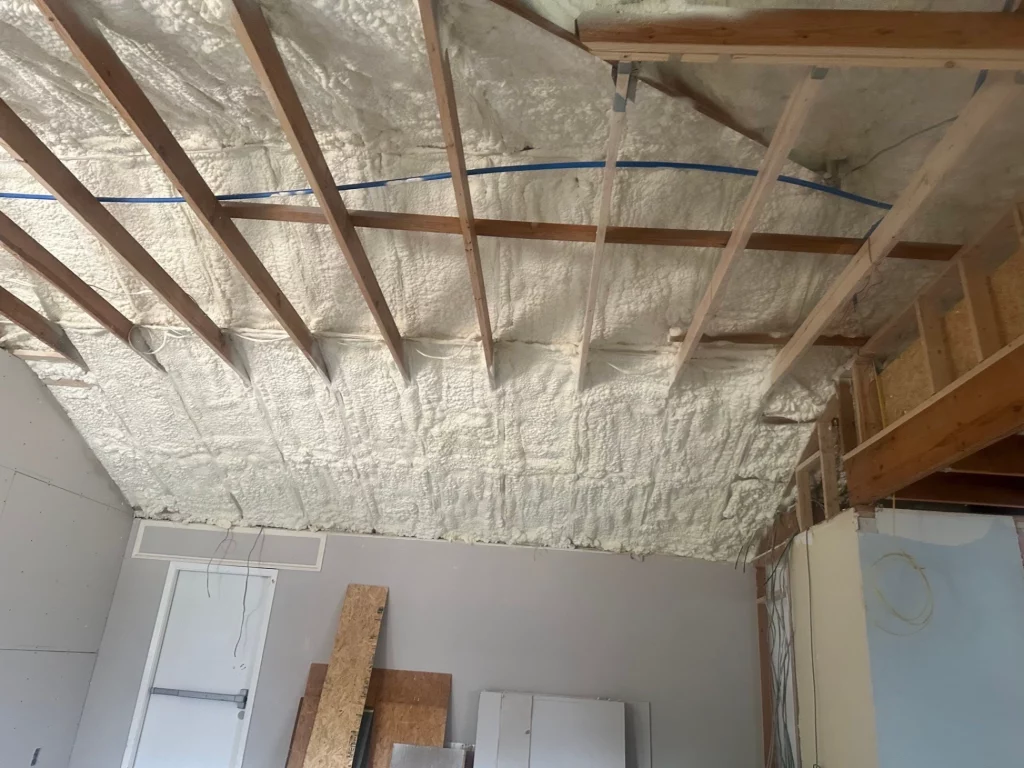
Important Considerations and Potential Challenges
While spray foam insulation offers numerous benefits, there are important factors to consider.
Health and Safety
The chemicals used to create spray foam can be harmful during the application process before they are fully cured. This is why professional installation with proper safety protocols, including PPE and ventilation, is essential. Guidance from the Environmental Protection Agency indicates that once spray foam is properly installed and fully cured, it is considered inert and poses no long-term health risks to occupants.
Environmental Impact
The environmental impact of spray foam has been a topic of discussion. Historically, some blowing agents used in closed-cell foams had a high global warming potential (GWP). However, the industry has evolved, and many modern spray foams now use blowing agents with a much lower GWP. The significant energy savings that spray foam provides over the lifetime of a home can also offset its initial carbon footprint.
The Importance of a Quality Installation
The vast majority of issues associated with spray foam, such as improper curing or lingering odors, stem from poor installation practices. It is vital to hire a reputable, experienced contractor who follows manufacturer guidelines and industry best practices. [Link to: How to Choose an Insulation Contractor]
Future Trends in Spray Foam Insulation
The spray foam insulation market continues to grow, with a report from Grand View Research projecting the global market to expand significantly. This growth is driven by increasing demand for energy-efficient homes and stricter building codes. Key trends include the development of more eco-friendly materials, such as those made with recycled or bio-based ingredients, and the integration of insulation with smart home technologies to further optimize energy use.
Putting Your Knowledge into Action
Understanding the fundamentals of residential spray foam insulation is the first step toward creating a more energy-efficient and comfortable home. You are now equipped with knowledge about the differences between open-cell and closed-cell foam, the significant benefits it provides, and the importance of a professional installation. This guide has covered the essential aspects, from how spray foam works to its applications in various parts of your home.
The key takeaways are the transformative impact of creating an air seal, the long-term energy savings, and the resulting improvement in indoor comfort and air quality. As you consider your home’s insulation needs, use this guide as a reference to help you make an informed and confident decision. Taking the step to upgrade your insulation is an investment in your home’s future and your family’s comfort.
Need Expert Guidance?
Navigating the specifics of your home’s insulation needs can be complex. If you have further questions or would like a professional assessment of your property, the experienced team at Stellrr Insulation & Spray Foam is here to help. For a detailed consultation, please call us at (512) 710-2839.
Sources
- U.S. Department of Energy: This official government resource explains how air sealing reduces energy loss in a home, a core benefit of spray foam insulation.
- Spray Polyurethane Foam Alliance (SPFA): This document from the industry’s leading trade association provides homeowners with information on the benefits of spray foam, including its impact on energy use.
- Environmental Protection Agency (EPA): This page from the EPA provides crucial safety information regarding the chemical components of spray foam and health considerations during and after installation.
Frequently Asked Questions About Residential Spray Foam Insulation
Is spray foam insulation safe for my family?
Yes, when installed correctly by a certified professional and allowed to cure completely, spray foam insulation is safe. The primary health concerns are related to the installation phase, which is why occupants must leave the home during application and for a specified curing period, usually 24-48 hours.
How long does spray foam insulation last?
Spray foam insulation is designed to last for the life of your home. It does not sag, settle, or degrade over time like some other insulation materials.
Can spray foam insulation be installed in an existing home?
Yes, spray foam can be installed in existing homes, though the process is most straightforward when wall cavities are exposed during a renovation. Professionals can also use techniques to inject foam into enclosed walls, but this is a more specialized application.
Does spray foam insulation cause moisture problems?
On the contrary, closed-cell spray foam acts as a barrier to moisture and can help prevent moisture-related issues like mold. Open-cell foam is vapor-permeable, so its use in areas prone to moisture must be carefully considered by a professional to ensure proper building science principles are followed. [Link to: Understanding Vapor Barriers in Home Insulation]
Is spray foam insulation worth the cost?
While the initial investment for spray foam insulation is often higher than for traditional materials, many homeowners find it to be a worthwhile investment due to the significant long-term energy savings, improved comfort, and increased home value. The durability of the product means you won’t have to worry about replacement costs.
Does the R-value of spray foam degrade over time?
The R-value of properly installed spray foam insulation is very stable and does not degrade over time. This is a significant advantage over some other insulation types that can lose effectiveness as they age.


